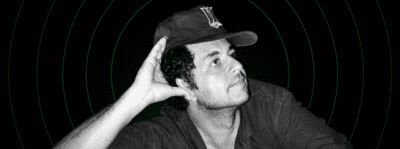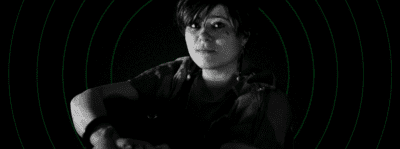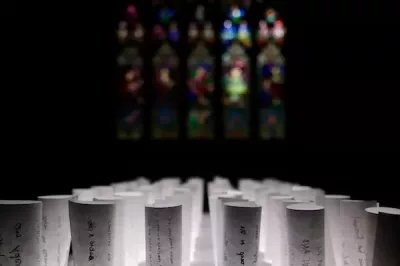'Mutt' was filmed run-and-gun style in Bushwick, Bed-Stuy and Queens (courtesy Strand Releasing)
Making a revolutionary film about a post-transition breakup
'Mutt' explores the aftermath of a relationship between a straight man and a lover who has transitioned
Last September, a transmasculine guy met with his straight ex-boyfriend in Herbert Von King Park in the middle of the night. He was there on that seasonably warm, late-summer night to apologize for the way their relationship ended months earlier.
Together with a ragtag crew, actors Lío Mehiel and Cole Doman were filming a pivotal scene for their new indie film “Mutt.”
“It felt like New York filmmaking in the 1970s with our skeleton crew of people running around the city and working 12-hour days,” says Mehiel.
The actors filmed throughout the neighborhoods the young filmmakers call home. “Mutt” was mostly shot off the L train in Bushwick and in Bed-Stuy, with a few scenes filmed in Queens.
“I know the neighborhood in and out, so it was a really beautiful experience for me to traverse my neighborhood within the world of the film. It made the experience feel so much more personal and grounded,” say Mehiel.
“Mutt” follows Feña (Mehiel) on one hectic day in Brooklyn when three people from his past are thrust back into his life: his Chilean father, his straight ex-boyfriend (Doman) and his 13-year-old half-sister. Having lost touch since transitioning from female to male, Feña navigates the new dynamics of these old relationships.
Brooklyn Magazine spoke with Mehiel about the meaning behind the title “Mutt” and both actors describe what they brought of themselves to the characters of ex-lovers Feña and John. Mehiel also describes the experience of filming a sexy shirtless scene as a trans person who has had top surgery.
We spoke with Mehiel and Doman prior to the Screen Actors Guild going on strike.
Lío, what does the title “Mutt” mean to you?
Lío Mehiel: “Mutt” symbolizes the ultimate outsider. It’s the person that doesn’t fit anywhere. It’s often is used to reference dogs, right? There’s this stray dog energy to the word. Feña feels like he doesn’t belong anywhere but he does belong. We see in the film that the three characters he has relationships with do want to be connected with him in an authentic way, but Feña has some defenses that he needs to let go of in order to make that happen.
Did either of you add anything autobiographical to your performances?
Cole Doman: Most gay guys were at one point closeted, and I definitely spent a lot of my adolescence trying to butch myself up to be invisible. I had a group of guy friends in my early teens who were all kind of misfits in different ways, so I thought a lot about them and thinking about where they ended up. There is a part of me that understands John and the physical space that he occupies. I do know that person so well and he’s a part of me. It felt scary doing it at the moment because I was being reminded of a version of myself that felt quite repressed. In a way, it’s healing to reactivate that version of myself as an adult and as someone who’s really quite comfortable with the way I walk through the world now.
Lío: I play Feña as more likable in the film than he was written in the script. That’s resulted in the film being a lot more accessible to a broad audience. People immediately fall in love with Feña, or at least that’s the feedback we’ve been getting so far, which is so exciting. It allows folks who’ve never met a trans person to feel like they have a new trans friend that they care about and extend that care to the trans community in a way they wouldn’t if they didn’t see “Mutt.”
To the point that you play Feña as likable, I was really shocked by the scene where Cole’s character John says people hate Feña because he’s “an asshole.” It left me asking, when was Feña an asshole in the movie?
Lío: Our director Vuk [Lungulov-Klotz] Cole, and I had a conversation about leaving that line in or taking it out. We were lucky to shoot that scene in the third week of production, so by then we were all a little more grounded in the story we were telling and able to have a more informed conversation about it. Ultimately, we decided to leave it in because Feña did some things to John in their relationship that were imperfect. Just because this character is a person who has some sensitivity and sweetness, they’re still an imperfect human like everybody else. They messed up their relationship with John in a way that hurt him. That rings true even if over the course of the film Feña comes across in a different way.
Cole: Regardless of what we see Feña go through in the movie, what’s really important is that this moment in the last scene feels like all of their heartbreak has been unleashed and is painful when it hits.
The way you perform John being uncomfortable with Feña’s trans body is exactly how people use body language to reject each other. It’s painful to watch.
Cole: I think it’s important not to shy away from the anger John feels because what’s underneath anyone’s real anger is usually fear, rejection and sadness. Anger is something we put on. It’s not actually how we really feel ever. The first time we see John he’s an angry person, and what we get to see at the end of the film is a floodgate of why he was so pent up and uncomfortable. It’s not really about Feña’s gender, it’s mostly about the pain he’s feeling from the rejection of the relationship ending.
Lío, how did it feel to do a shirtless scene on camera?
Lío: Honestly, as a trans person who has had the privilege to receive gender-affirming care in the form of top surgery, it was amazing. For the first time in my life after receiving that care I felt in love with and excited about my body, whereas I had spent a long time feeling really alienated and dissociated from my body and my presentation. About a year before we shot the film, I gave myself permission to get top surgery, which was a decision that took me a long time to make. So it was affirming and euphoric to be able to be a representative of this particular presentation of transmasculinity, because not all trans guys get top surgery and that’s totally cool, but I know if I saw this scene in a film when I was younger, it would have changed my life for the better. While shooting that scene I felt it was really important and it’s going to save some people’s lives.
Cole: We’re showing top surgery in a really sexual way for maybe the first time ever on camera and we thought the moment could be iconic if done the right way.
“Mutt” is now showing at the Film Forum in Manhattan.
You might also like 


























